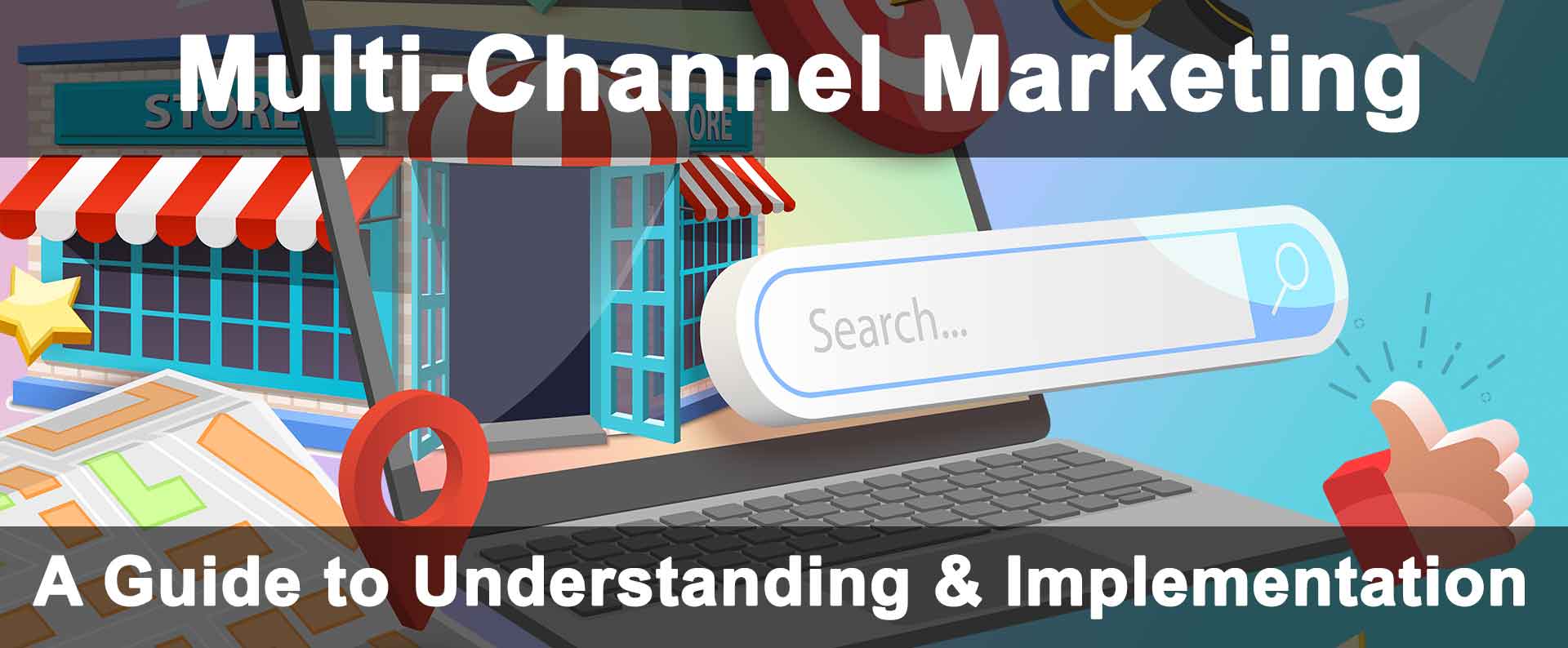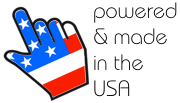With today’s increasingly complex and competitive marketplace, business owners are looking for efficient, affordable, and effective strategies to expand their reach, engage with potential customers, and increase growth.
Multi-channel marketing has proven to be an essential approach to accomplish this goal, utilizing many online and offline methods many businesses are already familiar with possibly using them individually.
Combining multiple techniques creates a cohesive and powerful marketing strategy for promoting products, services, or the company in general that results in a wider reach, increased engagement, and maximum conversion of the target audience.
There are numerous benefits to implementing a multi-channel marketing approach with countless examples of ways to use both online and offline channels together.
Defining Multi-Channel Marketing
Multi-channel marketing is a strategy that involves combining multiple ways of interacting with customers and prospects that we refer to as channels. Most people are already familiar with many of these channels, both online and offline.
Some examples of these channels include social media, email marketing, search engine optimization (SEO), websites, direct mail, television commercials, print media, networking groups, trade shows, events, and many more.
By taking advantage of a mix of online and offline channels, businesses can reach a broader audience, engage across various touch points, increase brand awareness, ensure consistent messaging, and ultimately drive higher conversions.
Benefits of Multi-Channel Marketing
- Meet Customers Where They Are
Businesses can engage and meet customers through their preferred channels, whether online or offline. Such a personalized approach can reach a broader and more diverse audience, while building stronger relationships with customers, ultimately leading to increased brand loyalty and long-term business.
- Improved Customer Engagement
Multi-channel marketing allows businesses to engage with customers using various methods leading to higher customer interaction and engagement, as customers can choose their preferred method of communication. Using a multi-channel approach ensures that no prospect is missed.
- Improved Brand Recognition
Consistent messaging across various channels helps to solidify brand identity while building trust. Using a cohesive strategy helps to ensure the brand remains top-of-mind, leading to higher brand awareness and recall.
- Improved Data Insights
Tracking customer interactions across various channels can help a business gain valuable data and insights into customer behaviors, preferences, etc. Such information is imperative to refining and improving marketing strategies for targeting the desired audience; ultimately resulting in improved conversions.
Examples of Online Multi-Channel Marketing Strategies
- Social Media Marketing
- Run a series of themed social media posts across Facebook, Instagram, and X (Twitter) to promote a seasonal sale. Use engaging visuals, hashtags, and interactive elements like polls and stories to drive user interaction. Schedule posts in advance using the multitude of free and low-cost tools to maintain consistency.
- Launch a social media contest on platforms like Instagram or Facebook, encouraging users to share user-generated content related to your brand or products. Utilize hashtags and tagging to increase visibility and engagement. Offer a prize or discount to incentivize participation and drive traffic to your website.
- Create engaging social media posts with high-quality visuals and compelling captions to promote your products or services. Use platforms like Facebook, Instagram, and X (Twitter) to connect with your target audience, respond to comments, and build a community. Run paid ad campaigns to expand your reach and target specific demographics.
- Run a series of themed social media posts across Facebook, Instagram, and X (Twitter) to promote a seasonal sale. Use engaging visuals, hashtags, and interactive elements like polls and stories to drive user interaction. Schedule posts in advance using the multitude of free and low-cost tools to maintain consistency.
- Email Marketing
- Launch a monthly email newsletter that features product updates, customer stories, and exclusive discounts. Use segmentation to tailor content to different customer segments, such as new customers, repeat buyers, and inactive subscribers. Employ A/B testing to optimize subject lines and improve open rates.
- Create a targeted email campaign for a new product launch, segmenting your subscriber list based on demographics, purchase history, or engagement levels. Personalize the email content with product images, descriptions, and customer testimonials. Include a clear call-to-action that directs recipients to a dedicated landing page on your website for more information or to make a purchase.
- Segment your email list based on customer preferences, purchase history, or demographics. Send personalized emails with tailored content, such as product recommendations, exclusive offers, or relevant blog posts. Use automation tools to follow up with subscribers, nurture leads, and send abandoned cart reminders.
- Launch a monthly email newsletter that features product updates, customer stories, and exclusive discounts. Use segmentation to tailor content to different customer segments, such as new customers, repeat buyers, and inactive subscribers. Employ A/B testing to optimize subject lines and improve open rates.
- Search Engine Optimization (SEO)
- Optimize your website for local SEO by including location-specific keywords in your content, meta descriptions, and title tags. Create a Google My Business profile and encourage satisfied customers to leave reviews.
- Conduct a comprehensive SEO audit of your website to identify opportunities for improvement. Make sure to conduct keyword research to identify relevant search terms for your business. Optimize meta tags, headings, and content with relevant keywords to improve organic search visibility.
- Create high-quality, informative blog posts that address common industry questions or trends, attracting organic traffic and establishing thought leadership. Build high-quality backlinks through guest blogging, influencer collaborations, or partnerships with industry websites.
- Optimize your website for local SEO by including location-specific keywords in your content, meta descriptions, and title tags. Create a Google My Business profile and encourage satisfied customers to leave reviews.
- Content Marketing
- Develop a comprehensive content marketing strategy that includes blog posts, whitepapers, and videos. Create a series of how-to guides and tutorials that address common pain points in your industry. Promote these pieces of content through your social media channels and email newsletters to drive traffic to your website.
- Develop an interactive how-to guide or tutorial series related to your products or services. Utilize multimedia elements such as videos, infographics, and downloadable resources to engage users and provide valuable information. Promote the content across social media channels, email newsletters, and industry websites to drive traffic and generate leads.
- Develop a blog on your website and regularly publish informative and valuable articles related to your industry. Optimize the content for search engines to attract organic traffic. Share the blog posts on social media and include links in your email newsletters to drive traffic back to your website.
- Develop a comprehensive content marketing strategy that includes blog posts, whitepapers, and videos. Create a series of how-to guides and tutorials that address common pain points in your industry. Promote these pieces of content through your social media channels and email newsletters to drive traffic to your website.
- Pay-Per-Click (PPC) Advertising
- Run targeted PPC campaigns on Google Ads and Bing Ads to capture high-intent search traffic. Use keyword research tools to identify valuable keywords and set up ad groups accordingly. Create compelling ad copy and utilize ad extensions to improve click-through rates. Monitor performance metrics and adjust bids as needed to maximize ROI.
- Run targeted PPC campaigns on Google Ads and Bing Ads to capture high-intent search traffic. Use keyword research tools to identify valuable keywords and set up ad groups accordingly. Create compelling ad copy and utilize ad extensions to improve click-through rates. Monitor performance metrics and adjust bids as needed to maximize ROI.
- Influencer Marketing
- Partner with relevant influencers or industry experts to promote your brand or products on their social media channels or blogs. Collaborate on sponsored posts, reviews, or live streams that authentically showcase your offerings to their followers. Monitor engagement metrics and track referral traffic to measure the campaign's success.
- Identify influencers or bloggers in your industry who have a significant following and engage with your target audience. Collaborate with them to create sponsored content, product reviews, or giveaways. Leverage their reach and credibility to increase brand awareness and drive traffic to your website.
- Partner with relevant influencers or industry experts to promote your brand or products on their social media channels or blogs. Collaborate on sponsored posts, reviews, or live streams that authentically showcase your offerings to their followers. Monitor engagement metrics and track referral traffic to measure the campaign's success.
Examples of Offline Multi-Channel Marketing Strategies
- Direct Mail Campaigns
- Send personalized direct mail pieces to a segmented list of high-value customers. Include a compelling call-to-action and a unique promo code that recipients can use on your website. Use variable data printing to customize elements of the mailer, such as the recipient's name or location-based offers.
- Send personalized direct mail postcards or catalogs to a segmented list of past customers or prospects. Include a compelling offer, such as a limited-time discount or free trial. Drive recipients to a dedicated landing page on your website to redeem the offer or learn more about your products and services.
- Send personalized direct mail pieces to a segmented list of high-value customers. Include a compelling call-to-action and a unique promo code that recipients can use on your website. Use variable data printing to customize elements of the mailer, such as the recipient's name or location-based offers.
- Events & Sponsorships
- Sponsor a local charity event and set up a booth to showcase your products or services. Distribute branded swag like pens, tote bags, or water bottles. Collect contact information from attendees interested in learning more and follow up with personalized emails after the event.
- Sponsor a local community event or industry conference to increase brand visibility and engagement. Set up a booth or exhibit to showcase your products or services and interact with attendees. Collect contact information and follow up with personalized emails or direct mail to nurture leads and drive conversions.
- Sponsor local sports teams, or community organizations that align with your brand values or target audience. Display your logo on event materials, signage, or team jerseys. Leverage the partnership to promote your business through co-branded marketing materials, social media mentions, or joint campaigns.
- Sponsor a local charity event and set up a booth to showcase your products or services. Distribute branded swag like pens, tote bags, or water bottles. Collect contact information from attendees interested in learning more and follow up with personalized emails after the event.
- Trade Shows & Exhibitions
- Exhibit at industry-specific trade shows to connect with potential customers and partners. Create an engaging booth experience with interactive displays and product demonstrations. Use lead capture forms to gather contact details from visitors, and follow up with tailored email campaigns to nurture these leads.
- Participate in industry-specific exhibitions or conferences relevant to your business. Set up a booth or display to showcase your products or services. Collect leads through contests, giveaways, or interactive experiences. Follow up with personalized emails or phone calls after the event to nurture relationships.
- Exhibit at industry-specific trade shows to connect with potential customers and partners. Create an engaging booth experience with interactive displays and product demonstrations. Use lead capture forms to gather contact details from visitors, and follow up with tailored email campaigns to nurture these leads.
- Guerrilla Marketing
- Implement a guerrilla marketing campaign by placing creative, eye-catching installations or street art in high-traffic areas. For example, if you own a coffee shop, create a giant coffee cup sculpture and place it in a busy downtown area with a QR codes that leads to a special offer on your website. Document the campaign on social media to extend its reach.
- Be sure to check into any necessary permitting to obtain proper permission to avoid any potential legal issues.
- Implement a guerrilla marketing campaign by placing creative, eye-catching installations or street art in high-traffic areas. For example, if you own a coffee shop, create a giant coffee cup sculpture and place it in a busy downtown area with a QR codes that leads to a special offer on your website. Document the campaign on social media to extend its reach.
- Networking Events
- Attend industry-specific networking events or seminars to connect with potential partners, customers, and industry influencers. Bring business cards, promotional materials, and product samples to share with attendees. Follow up with personalized emails or phone calls after the event to continue the conversation and build relationships.
- Attend industry-specific networking events or seminars to connect with potential partners, customers, and industry influencers. Bring business cards, promotional materials, and product samples to share with attendees. Follow up with personalized emails or phone calls after the event to continue the conversation and build relationships.
- Outdoor & Out-of-Home (OOH) Advertising
- Utilize outdoor advertising mediums such as billboards, bus shelters, or vehicle wraps to increase brand visibility in high-traffic areas. Design eye-catching graphics and messaging that reflect your brand identity and key value propositions. Include a call-to-action and a memorable website URL or phone number for interested viewers to learn more.
- Utilize signage, or digital displays in high-traffic areas to increase brand visibility. Design attention-grabbing visuals and concise messaging that communicates your unique selling points. Include a memorable website URL or phone number for potential customers to learn more.
- Utilize outdoor advertising mediums such as billboards, bus shelters, or vehicle wraps to increase brand visibility in high-traffic areas. Design eye-catching graphics and messaging that reflect your brand identity and key value propositions. Include a call-to-action and a memorable website URL or phone number for interested viewers to learn more.
- Print Advertising
- Place ads in local newspapers, magazines, or industry-specific publications to target a specific geographic or niche audience. Design visually appealing ads with a clear message and call-to-action. Include a unique URL or promo code to track the effectiveness of the campaign.
The Take Away
By implementing a diverse range of online and offline strategies, businesses can create a powerful multichannel marketing campaign. With methodical use, multi-channel marketing campaigns will enhance your brand's reach and engagement across various touch points.
Combining digital tactics like social media contests and influencer partnerships with traditional methods like print advertising and networking events, helps businesses create a cohesive and impactful marketing strategy that resonates with their target audience and drives results .













